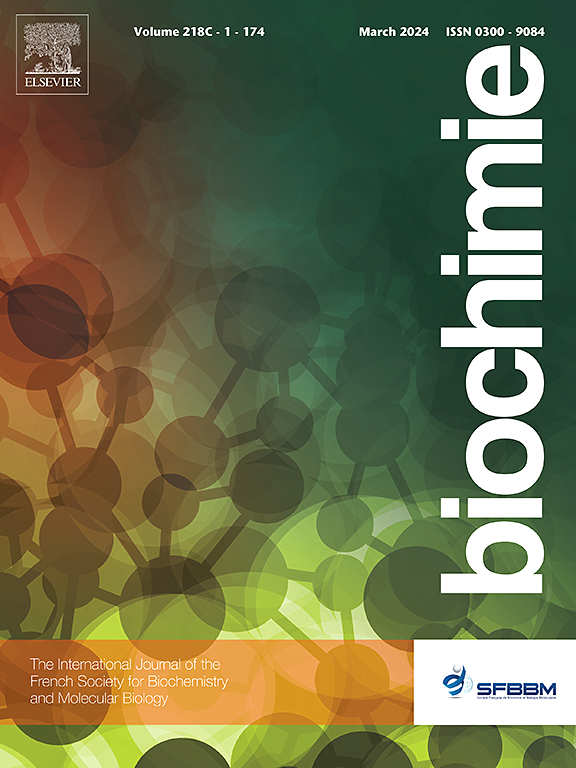Fibrinolytic enzyme from Arthrospira platensis and its effects on breast cancer cells: Exploring its potential as an innovative therapy
IF 3.3
3区 生物学
Q2 BIOCHEMISTRY & MOLECULAR BIOLOGY
引用次数: 0
Abstract
Fibrinolytic enzymes are promising in treating cardiovascular diseases due to their capacity to dissolve blood clots. The fibrinolytic enzyme from Arthrospira platensis (FEAP) was purified by ion exchange chromatography to investigate its ability to activate plasminogen, as well as its thrombolytic and fibrinogenolytic potential. Subsequently, two different cytotoxic assays (MTT and NR) and hemolysis test were performed to evaluate FEAP's safety. Furthermore, cell migration and the genotoxic and hemolytic potential were also investigated. The purified enzyme showed thrombus degradation of 43 % and thrombolytic action directly on fibrin, which can reduce possible side effects, such as hemorrhage. MTT assay was more sensitive to determine the enzyme cytotoxicity, which decreased the viability of breast cancer tumor cells (Sarcoma-180 and MDA-MB-231) and macrophages (J774A.1). In addition, the enzyme also exhibited non-hemolytic, antimetastatic, and non-genotoxic characteristics. These findings are innovative for a fibrinolytic protease and may indicate that it is safe for people undergoing cancer treatment, reducing side effects such as hemorrhage, in addition to inhibiting tumor cells and preventing metastasis, which can help with chemotherapy treatment.

来自铂氏螺旋体的纤溶酶及其对乳腺癌细胞的作用:探索其作为一种创新疗法的潜力。
纤溶酶因其溶解血凝块的能力而在治疗心血管疾病方面很有前景。采用离子交换色谱法纯化了platarthrospira (FEAP)的纤溶酶,研究了其激活纤溶酶原的能力,以及其溶栓和纤溶蛋白原的潜力。随后进行两种不同的细胞毒性试验(MTT和NR)和溶血试验来评价FEAP的安全性。此外,还研究了细胞迁移和遗传毒性和溶血潜能。纯化后的酶对血栓的降解率为43%,并直接对纤维蛋白起溶栓作用,减少了可能出现的副作用,如出血。MTT法测定酶的细胞毒性更敏感,酶降低了乳腺癌肿瘤细胞(saroma -180和MDA-MB-231)和巨噬细胞(J774A.1)的活力。此外,该酶还表现出非溶血、抗转移和无基因毒性的特点。这些发现对于纤溶蛋白酶来说是创新的,可能表明它对正在接受癌症治疗的人是安全的,除了抑制肿瘤细胞和防止转移外,还可以减少出血等副作用,这有助于化疗治疗。
本文章由计算机程序翻译,如有差异,请以英文原文为准。
求助全文
约1分钟内获得全文
求助全文
来源期刊

Biochimie
生物-生化与分子生物学
CiteScore
7.20
自引率
2.60%
发文量
219
审稿时长
40 days
期刊介绍:
Biochimie publishes original research articles, short communications, review articles, graphical reviews, mini-reviews, and hypotheses in the broad areas of biology, including biochemistry, enzymology, molecular and cell biology, metabolic regulation, genetics, immunology, microbiology, structural biology, genomics, proteomics, and molecular mechanisms of disease. Biochimie publishes exclusively in English.
Articles are subject to peer review, and must satisfy the requirements of originality, high scientific integrity and general interest to a broad range of readers. Submissions that are judged to be of sound scientific and technical quality but do not fully satisfy the requirements for publication in Biochimie may benefit from a transfer service to a more suitable journal within the same subject area.
 求助内容:
求助内容: 应助结果提醒方式:
应助结果提醒方式:


